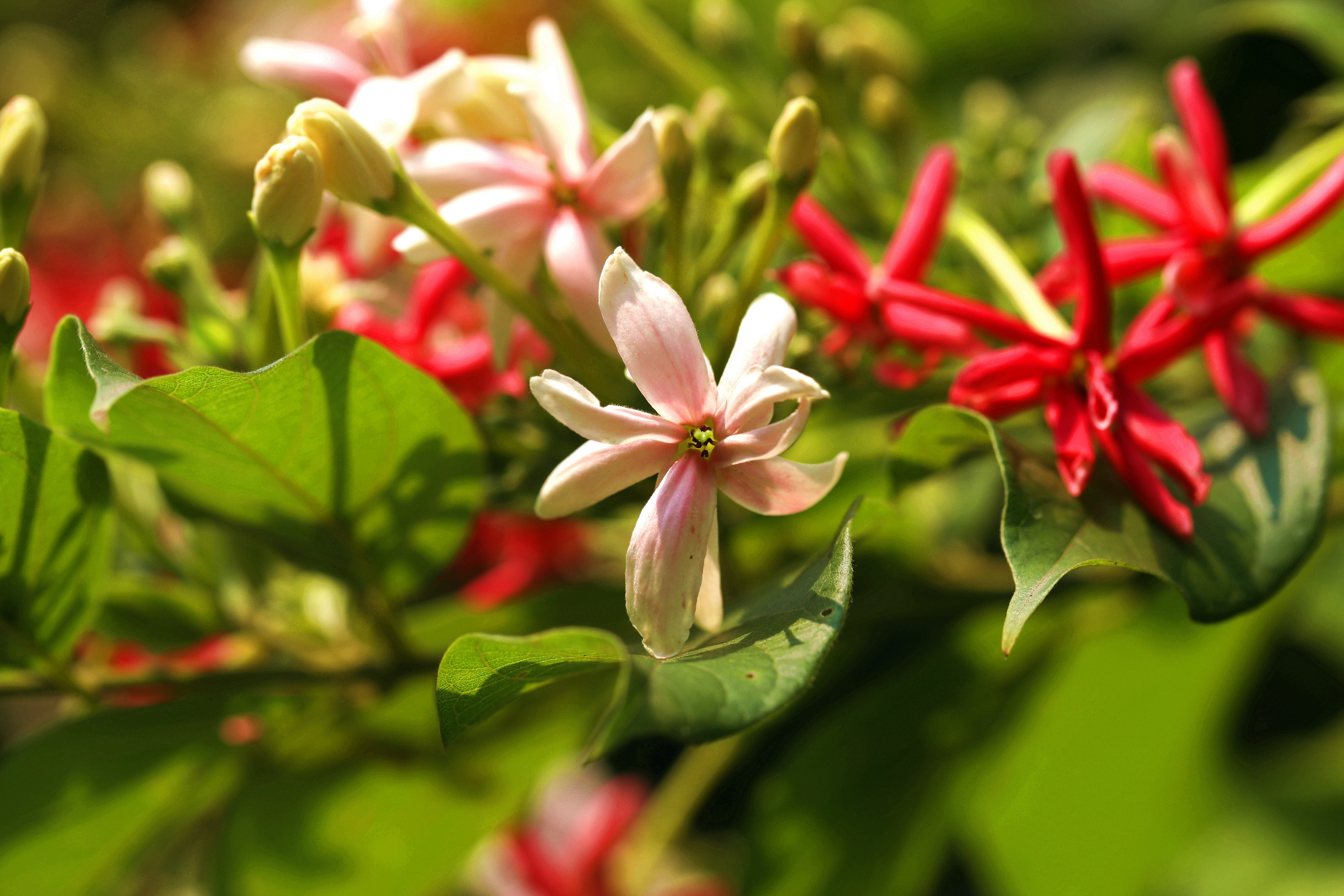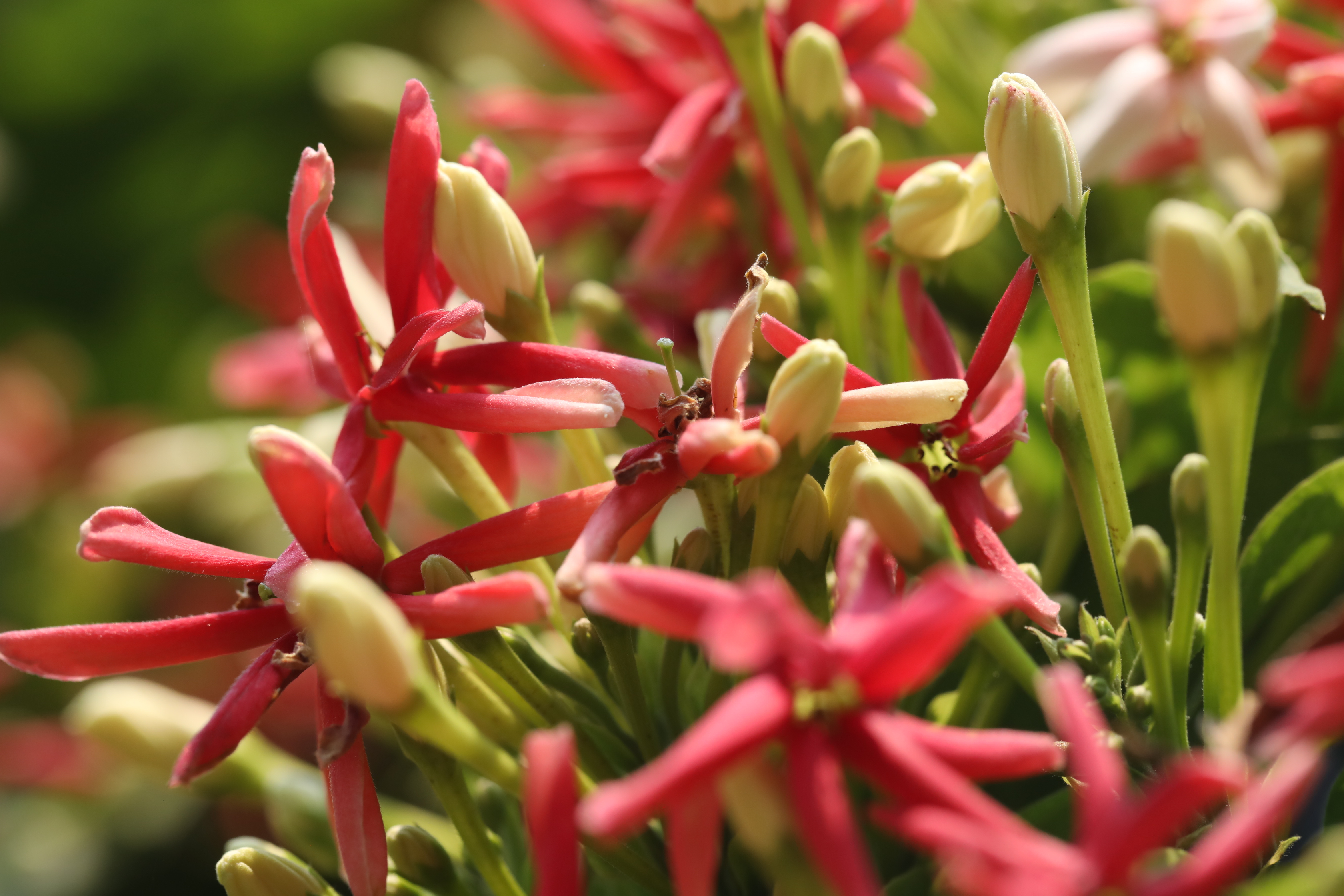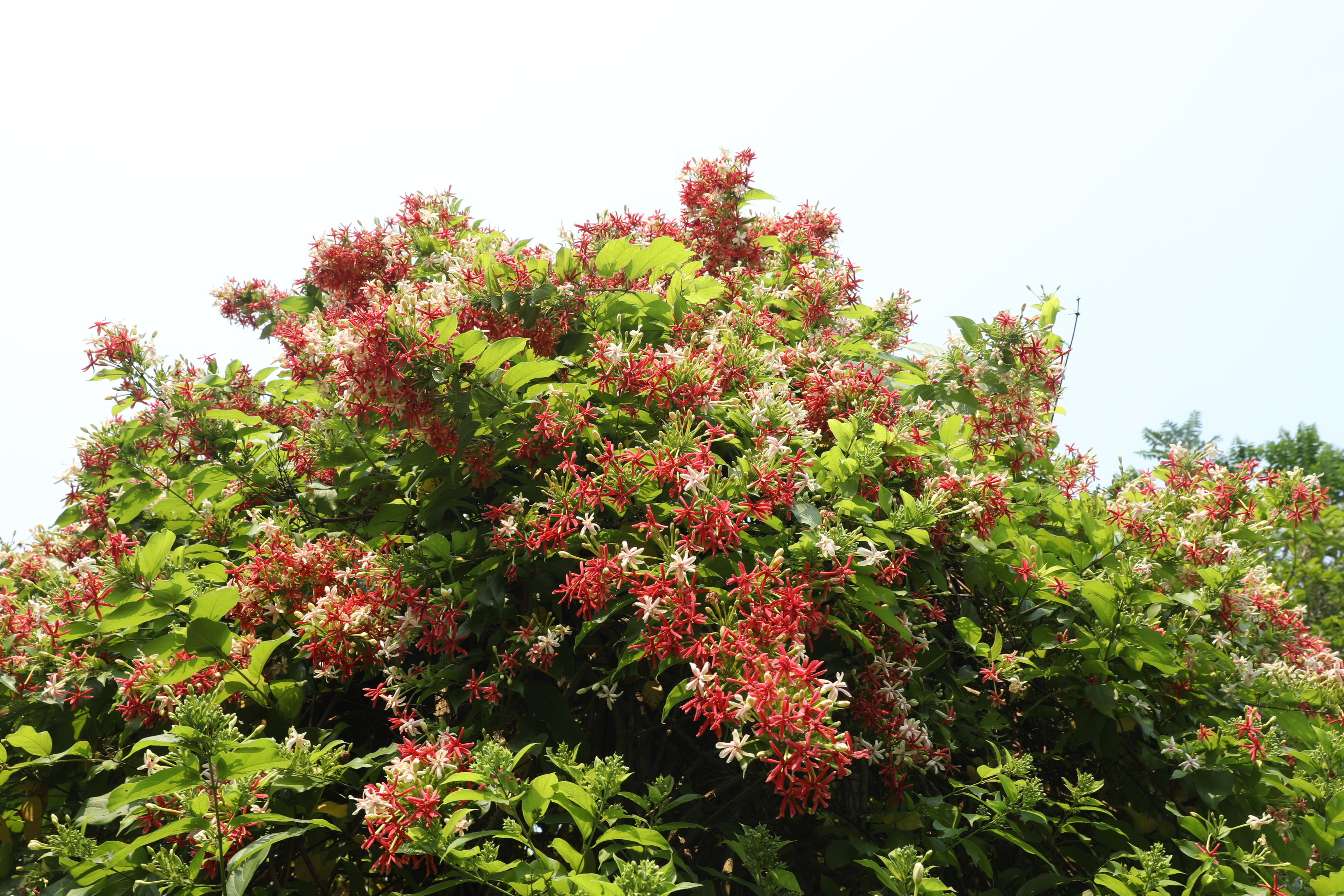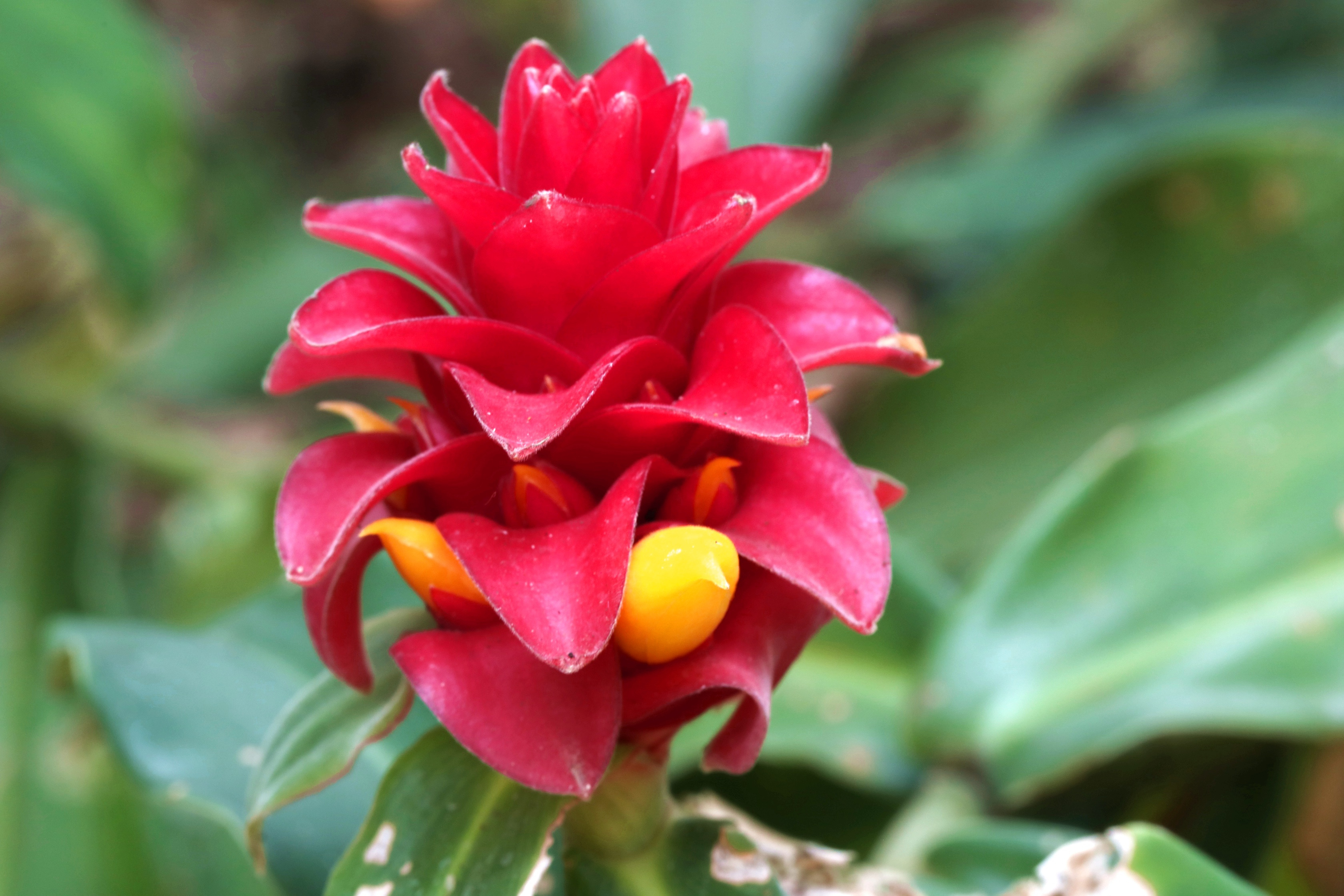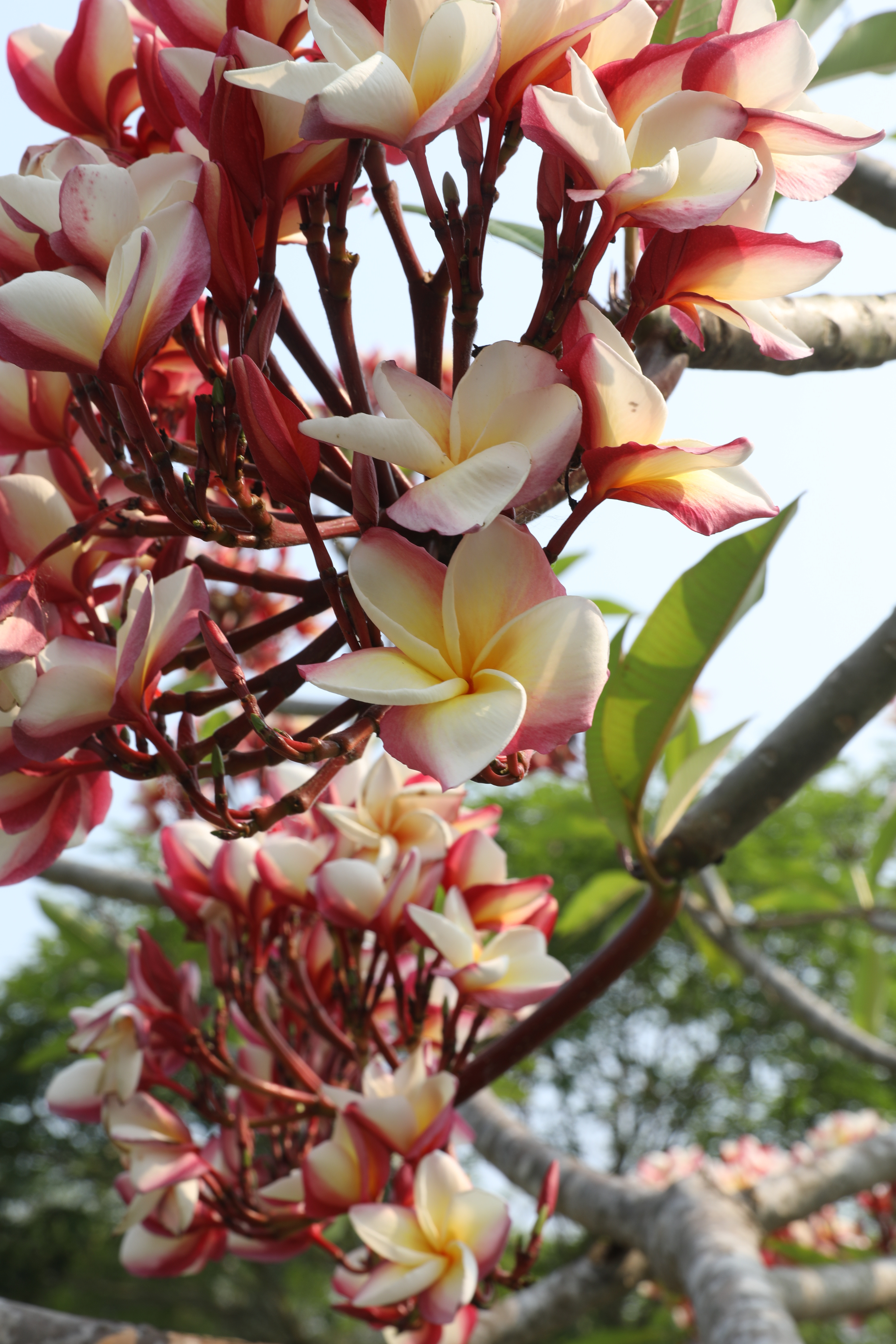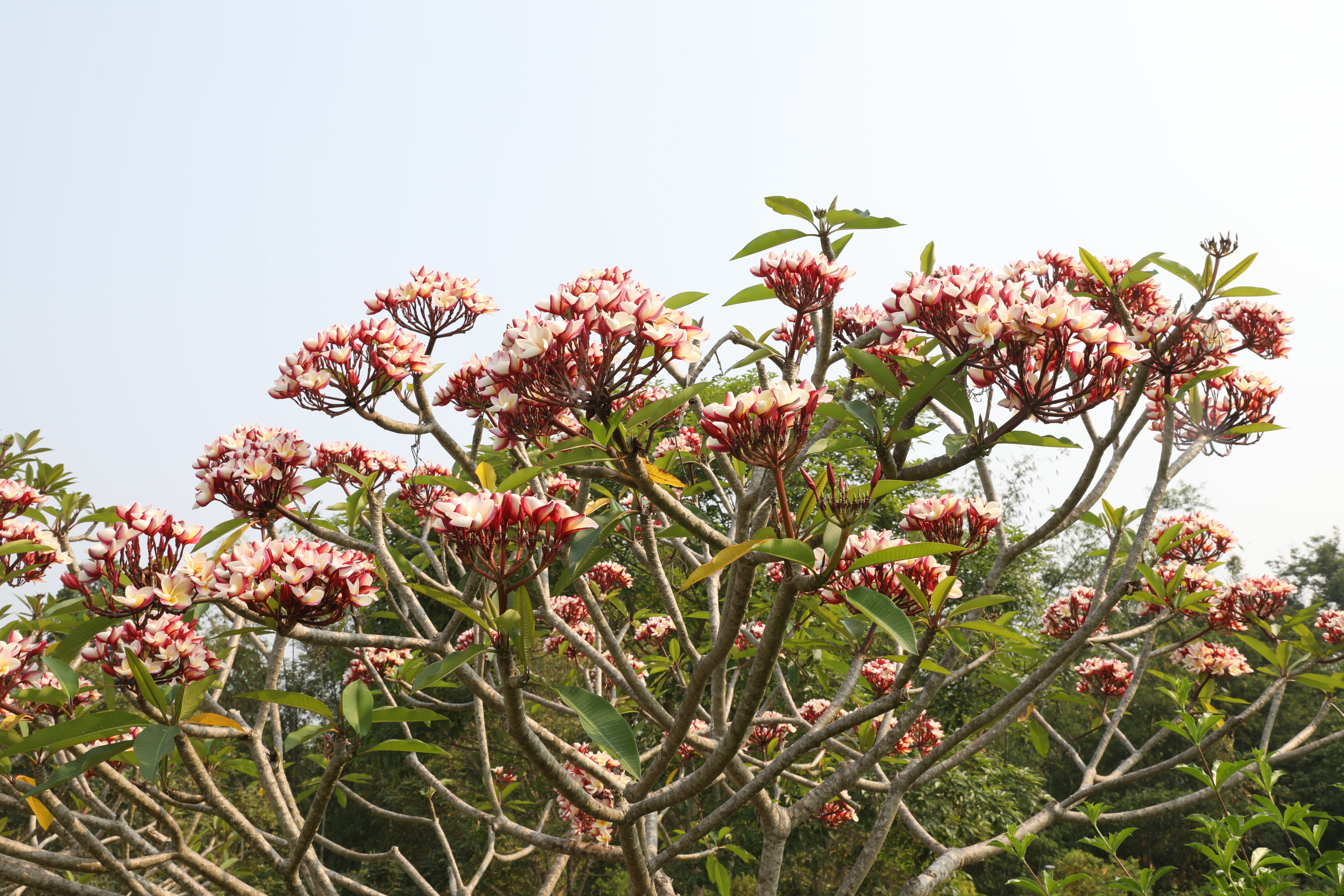When delving into the world of flowers, you may find that some plants' charm is far beyond your wildest imagination.
Rangoon creeper
The Rangoon creeper has gained its fame as the chameleon of flowers given it can change its colors according to different phases of its blooming period. The flower initially blooms in white and turns into light pink the next day. As the day progresses, the flower gradually becomes reddish until it finally settles into a purplish red three or four days after the second transition.
The Rangoon creeper at Xishuangbanna Tropical Botanic Garden, Yunnan Province, southwest China. /Photo by Zhang Hao
The Rangoon creeper at Xishuangbanna Tropical Botanic Garden, Yunnan Province, southwest China. /Photo by Zhang Hao
Research shows the color transformation serves to attract more moths to pollinate at night due to the lack of pollinators during the day time. Because of its unique trait, the same tree can be seen covered by the same flowers blooming in three different colors.
Spiral ginger
People easily mistake the spiral ginger's red inflorescence for its flower. Indeed, the inflorescence – which is in the shape of a mini Buddhist pagoda – looks way more pronouncing than its bright yellow flower hidden beneath its leaves.
The plant can grow up to six feet tall and is often used as an ornamental plant in botanic gardens or at home.
The spiral ginger at Xishuangbanna Tropical Botanic Garden, Yunnan Province, southwest China. /Photo by Zhang Hao
Mexican frangipani
The Mexican frangipani is one of the most typical flowers of southwest China’s Yunnan Province. The flowers usually appear in various colors such as red, yellow and white or light pink.
The plant is indispensable for almost every Buddhist temple of the Dai minority as it is described as a saint flower in Buddhism. Apart from its religious significance, it can also be made into a local delicacy. Besides, Dai women are often seen using the Mexican frangipani as an accessory by tucking it behind their ears.
The Mexican frangipani at Xishuangbanna Tropical Botanic Garden, Yunnan Province, southwest China. /Photo by Zhang Hao
The Mexican frangipani at Xishuangbanna Tropical Botanic Garden, Yunnan Province, southwest China. /Photo by Zhang Hao
